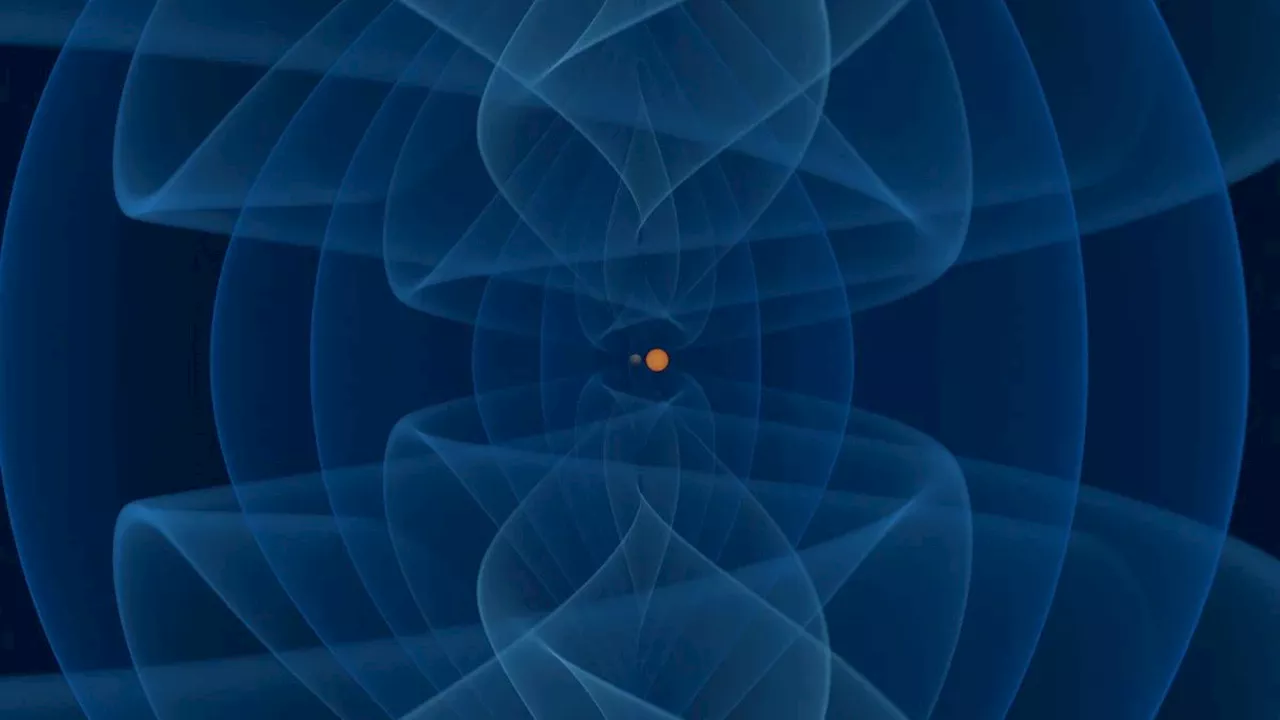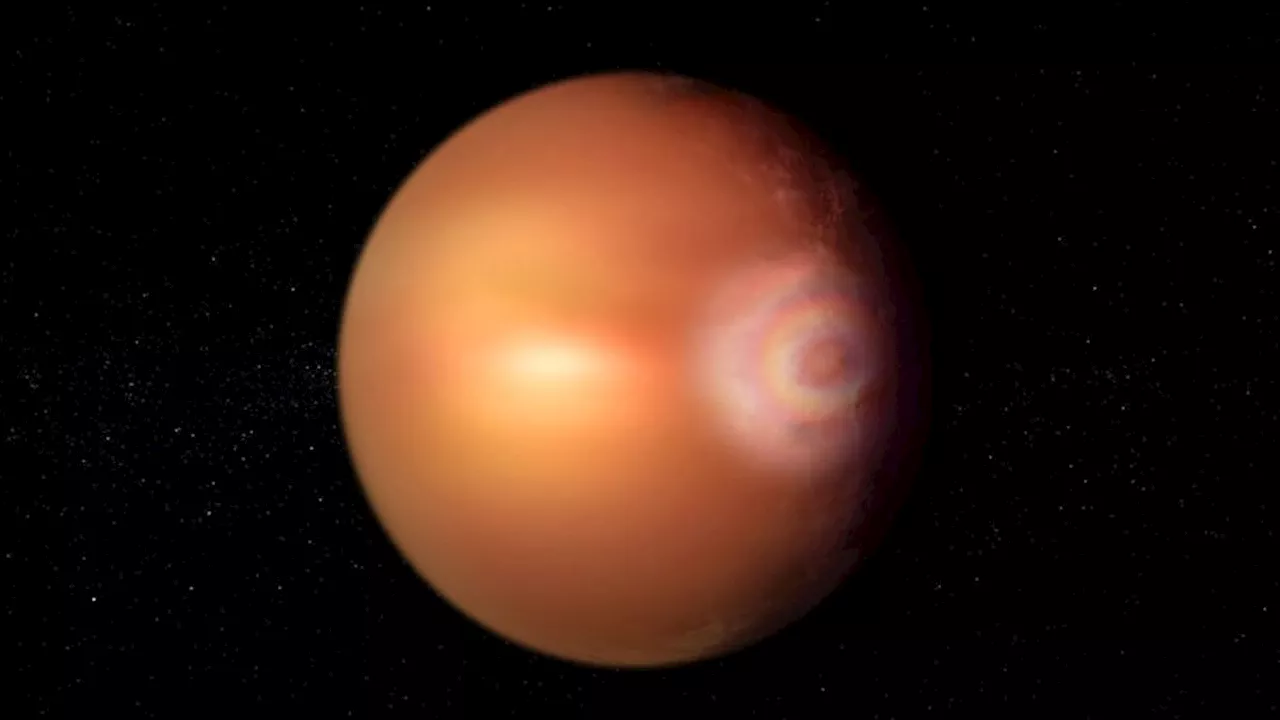Computer simulations by astronomers support the idea that dark matter -- matter that no one has yet directly detected but which many physicists think must be there to explain several aspects of the observable universe -- exists, according to the researchers.
Computer simulations by astronomers support the idea that dark matter -- matter that no one has yet directly detected but which many physicists think must be there to explain several aspects of the observable universe -- exists, according to the researchers, who include those at the University of California, Irvine.
The test involved running computer simulations with both types of matter -- normal and dark -- to explain the presence of intriguing features measured in real galaxies. The team reported their results inThe features in galaxies the team found"are expected to appear in a universe with dark matter but would be difficult to explain in a universe without it," said Mercado."We show that such features appear in observations of many real galaxies.
The features also appear in observations made by proponents of a dark matter-free universe."The observations we examined -- the very observations where we found these features -- were conducted by adherents of dark matter-free theories," said co-author Jorge Moreno, associate professor of physics and astronomy at Pomona College."Despite their obvious presence, little-to-no analysis was performed on these features by that community.
"It would be interesting to see if we could use this same relationship to even distinguish between different dark matter models," said Mercado."Understanding how this relationship changes under distinct dark matter models could help us constrain the properties of dark matter itself."Francisco J Mercado, James S Bullock, Jorge Moreno, Michael Boylan-Kolchin, Philip F Hopkins, Andrew Wetzel, Claude-André Faucher-Giguère, Jenna Samuel.
Astrophysics Astronomy Cosmology Quantum Physics Physics Nuclear Energy Inorganic Chemistry
United States Latest News, United States Headlines
Similar News:You can also read news stories similar to this one that we have collected from other news sources.
 Quantinuum quantum computer using Microsoft's 'logical quantum bits' runs 14,000 experiments with no errorsA team of computer engineers from quantum computer maker Quantinuum, working with computer scientists from Microsoft, has found a way to greatly reduce errors when running experiments on a quantum computer. The combined group has published a paper describing their work and results on the arXiv preprint server.
Quantinuum quantum computer using Microsoft's 'logical quantum bits' runs 14,000 experiments with no errorsA team of computer engineers from quantum computer maker Quantinuum, working with computer scientists from Microsoft, has found a way to greatly reduce errors when running experiments on a quantum computer. The combined group has published a paper describing their work and results on the arXiv preprint server.
Read more »
 Astronomers detect potential 'glory effect' on a hellish distant world for the first timePotential signs of the rainbow-like 'glory effect' have been detected on a planet outside our solar system. Glory are colorful concentric rings of light that occur only under peculiar conditions.
Astronomers detect potential 'glory effect' on a hellish distant world for the first timePotential signs of the rainbow-like 'glory effect' have been detected on a planet outside our solar system. Glory are colorful concentric rings of light that occur only under peculiar conditions.
Read more »
 Challenging Conventional Wisdom – Astronomers Discover the Dual Nature of Galaxy Groups and ClustersScience, Space and Technology News 2024
Challenging Conventional Wisdom – Astronomers Discover the Dual Nature of Galaxy Groups and ClustersScience, Space and Technology News 2024
Read more »
 Astronomers Discover Rare Merger Between Neutron Star and Lightweight Black HoleAstronomers have detected a rare merger between a neutron star and a lightweight black hole, shedding light on the existence of objects in this previously thought to be empty realm.
Astronomers Discover Rare Merger Between Neutron Star and Lightweight Black HoleAstronomers have detected a rare merger between a neutron star and a lightweight black hole, shedding light on the existence of objects in this previously thought to be empty realm.
Read more »
 Astronomers Spot Rare 'Glory' Phenomenon on Distant ExoplanetAstronomers have potentially discovered a rare 'glory' phenomenon on the exoplanet WASP-76 b, located 637 light-years away from Earth. If confirmed, this would be the first time such a rainbow-colored light show has been observed outside our solar system.
Astronomers Spot Rare 'Glory' Phenomenon on Distant ExoplanetAstronomers have potentially discovered a rare 'glory' phenomenon on the exoplanet WASP-76 b, located 637 light-years away from Earth. If confirmed, this would be the first time such a rainbow-colored light show has been observed outside our solar system.
Read more »
 Astronomers Discover Surprising Stellar Pair in Stunning CloudAstronomers were surprised to find a stellar pair in a cloud of gas and dust that is not like typical star pairs. New data suggests that the system originally had three stars until two of them collided and merged, altering the system's fate.
Astronomers Discover Surprising Stellar Pair in Stunning CloudAstronomers were surprised to find a stellar pair in a cloud of gas and dust that is not like typical star pairs. New data suggests that the system originally had three stars until two of them collided and merged, altering the system's fate.
Read more »
